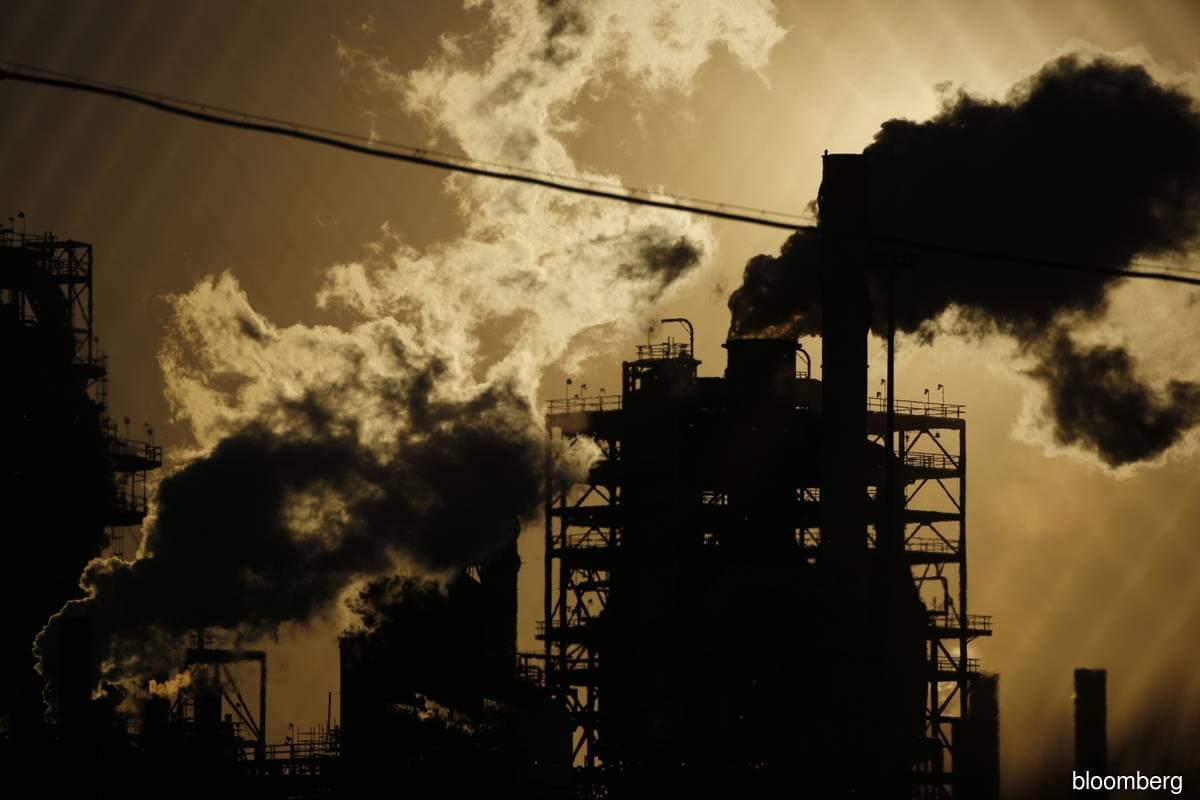
KUALA LUMPUR (May 25): Petrochemicals could be made with almost no carbon emissions by investing an extra US$759 billion (about RM3.33 trillion) by 2050.
BloombergNEF (BNEF) — a strategic research provider covering global commodity markets and disruptive technologies — in its “Decarbonizing Petrochemicals: A Net Zero Pathway” report released on Tuesday (May 24) said electrification and carbon capture and storage (CCS) are likely to play a central role in reducing emissions from the production of high-value chemicals, or HVCs, which are key feedstocks used to make plastics and many manufactured goods.
It said HVCs are responsible for up to 2% of global emissions, equivalent to aviation, and double the aluminium industry’s contribution.
BNEF said governments and corporate net-zero commitments are pushing the petrochemicals industry to cut its emissions by 2050.
It said despite facing a more complex decarbonisation path than any other sector, petrochemicals players’ net-zero targets cover more of the global manufacturing capacity than other heavy emitters like steel and cement.
BNEF estimates that new clean capacity and retrofits for lower emissions will cost the petrochemicals industry an additional US$759 billion compared to business-as-usual capacity growth.
It said this is roughly 1% of the US$172 trillion estimated to be needed to decarbonise the global energy sector by 2050.
The firm said decarbonising chemicals will be capex-intensive, but it is crucial for all new capacity and retrofits beyond 2030 to be net-zero to avoid the risk of stranding assets over their long lifetimes.
It said by 2050, CCS could be the cheapest option for net-zero petrochemicals and abate the emissions of 40% of HVC production.
Another 35% would rely on new electrified cracker designs, which could provide the only net-zero production route that is cost-competitive with conventional steam crackers.
Bioplastics, which are the only commercially available net-zero route today, would capture only 2.5% of the market by 2050 due to high costs and a lack of sustainable biomass.
BNEF said the important role that CCS is likely to play is a unique opportunity for integrated oil majors, which already have expertise in the technology and could accelerate cost declines.
It said oil companies had been exploring a greater footprint in the petrochemicals space as a hedge against declining fuel demand.
If these companies shift the focus of their CCS investments into downstream assets, they could lead the transition by expanding net-zero petrochemicals production and driving down costs for the entire sector.
BNEF said the petrochemicals supply chain cannot decarbonise without the help of refiners.
It said that currently, most of the world’s supply of aromatics, a key chemical ingredient in products like PET bottles, is sourced from refineries as a by-product of fuel production.
In a net-zero scenario, refinery retirements start in 2030 as demand for transport fuels peaks and then begins to fall due to passenger car electrification.
This leaves a gap in aromatics supply that can currently only be addressed by using green methanol feedstock — an expensive route that would triple the price of many chemicals.
This process would account for 20% of chemicals production, up from 0% today, unless refiners make a dramatic pivot to focus on chemical production while simultaneously decarbonising their operations.
BNEF’s research shows low-carbon routes will remain more expensive than today’s production, despite some steep cost declines, in 2050.
This could lead to persistent green premiums and create strong incentives to replace or reduce plastic and chemicals use in markets with net-zero mandates.
